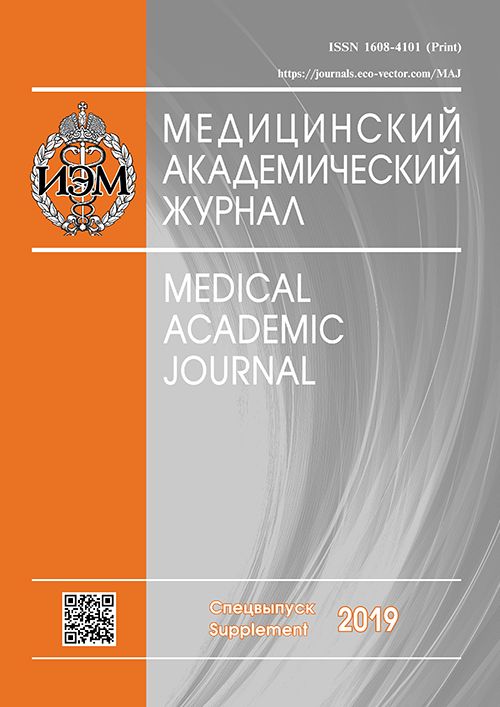RELATIONSHIP OF NERVOUS AND IMMUNE SYSTEMS IN PATIENTS WITH CHRONIC MERCURY INTOXICATION
- Authors: Bodienkova GM1,2, Lakhman OL1, Boklazhenko EV1, Kurchevenko SI1, Katamanova EV1
-
Affiliations:
- East-Siberian Institute of Medical and Ecological Research, Angarsk
- Irkutsk National Research Technical University, Irkutsk
- Issue: Vol 19, No 1S (2019)
- Pages: 63-65
- Section: Articles
- Published: 15.12.2019
- URL: https://journals.eco-vector.com/MAJ/article/view/19327
- ID: 19327
Cite item
Abstract
The purpose of the study was to identify the dependencies between the content of cytokines, neuronal antibodies and changes in the bioelectrical activity of the brain in patients with neurointoxication with mercury, depending on the severity of the pathological process. Surveyed men with professional chronic mercury intoxication I-II degree - 17 people and 33 - with ChMI III degree. The serum ELISA was used to determine IL-1β, IL-4, IL-8, IL-10, TNF-α, INF-γ, and AT to nerve tissue proteins (NF-200, GFAP, S-100, MBP, MAG, B-end. Ca-canal, B2GP, DNA, Glu-R, GABA-R, DA-R, Ser-R, AH-R). Visual evoked potentials were evaluated on an electroencephalograph. As a result of the research, the peculiarities of the relationship between cytokines and neuronal antibodies, indicating the initiation or regulation of immunopathological reactions depending on the degree of ChMI, were revealed. When ChMI I-II Art. IL-1β hyperproduction was accompanied by an increase in AT to Ser-R, B-head Ca-channel and a decrease in AT to Glu-R. In patients with ChMI III degree a decrease in IL-1β is associated with increased production of antibodies to S-100, and a decrease in TNF-α with increasing antibodies to NF-200, GABA-R, GFAP. In patients with ChMI with high levels of antibodies to S-100, a more pronounced delay in the appearance of the response of the cortex to the visual stimulus, an increase in the latency of P200 was revealed. Thus, the obtained data confirm the complex functional relationships between the nervous and immune systems, the selectivity and selectivity of damage to the structures of the nervous tissue at various stages of ChMI, which can serve as unique biomarkers.
Keywords
Full Text
About the authors
G M Bodienkova
East-Siberian Institute of Medical and Ecological Research, Angarsk; Irkutsk National Research Technical University, Irkutsk
O L Lakhman
East-Siberian Institute of Medical and Ecological Research, Angarsk
E V Boklazhenko
East-Siberian Institute of Medical and Ecological Research, Angarsk
S I Kurchevenko
East-Siberian Institute of Medical and Ecological Research, Angarsk
E V Katamanova
East-Siberian Institute of Medical and Ecological Research, Angarsk
References
- Sozaeva DI, Berezhanskaya SB. The main mechanisms of interaction of the nervous and immune systems. Clinical and experimental data. Kuban Scientific Medical Herald. 2014;3:145-150.
- Bodienkova GM, Boklazhenko EV. Dynamics of changes in neurotropic antibodies induced by exposure to metallic mercury vapor. Modern problems of science and education. 2016;2: http://science-education.ru/ru/article/view?id=24425.
- Bodienkova GM, Boklazhenko EV. Patterns of cytokine production with chronic exposure to physical and chemical production factors. Occupational Medicine and Industrial Ecology. 2017;9:26-27.
Supplementary files







